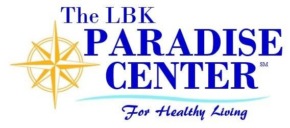Fall is a beautiful time of year. God turns down the heat and humidity thermostat to a comfortable level. Pumpkins are as big as they’re going to get and always just in time for the Halloween pumpkin carving contests. And, the sweetest, most delicious and reddest apples are ripe for the pickin!
Apple pies, apple jelly, apple cider are just some of the yummy treats we prepare with apples. But I’m not going to give you mother’s apple pie recipe today. Instead, I am going to tell you a story about apple cider vinegar. Did you know that in the old days, it topped the list for “youthful aging”?
We have come a long way in gathering herbs, roots, etc., from nature’s abundant supply of healing remedies. I remember my grandfather being a strong advocate for applying wiggly blood suckers to infected lacerations (this treatment had me running and screaming to mommy!). How far have we truly come with our 21st Century medicinal cures?
Compared to some people, I spend very little money on cosmetics. One friend who has always been up on the latest trends had a new anti-wrinkle cream in her bathroom that looked interesting. I researched it on the “net” to see where I might get some to try. Over $2000!! Well, I figure God knows what He’s doing with my beautiful new wrinkles, so, I decided to pass. I did look at the ingredients and guess what? About 95% came from nature’s storehouse.
Fall is a good time to turn our thoughts to the wonders of the primordial apple – specifically, apple cider vinegar (“ACV”). For thousands of years ancient civilizations, such as the Egyptians, Greeks and Romans, used it for its medicinal properties and health benefits, as well as for preserving and flavoring food. I figure what was good for all of antiquity should have some benefits today.
ACV has withstood the test of time as nature’s very own medicine. It is an acetic acid that comes from fermenting apples. It’s mostly water – nearly 94% – and contains a tiny bit of iron, calcium, magnesium, zinc, sodium, sugar and some potassium. It has strong antimicrobial and anti-inflammatory properties. Plus, it contains numerous nutrients such as acetic acid, malic acid, vitamins C and B, nutrients that can benefit your skin, hair, nails, and overall health.
ACV has antiseptic and antibacterial properties that can help sanitize your skin. It is quicky absorbed in the skin to eliminate the bacteria, oil, and dust that may settle deep in your pores. Also, ACV works as a natural skin toner that can tighten your pores to keep them from getting clogged in the future. ACV also contains alpha-hydroxy acids that help exfoliate dead skin cells while increasing microcirculation under it to speed up the skin regeneration process. These acids also moisturize the skin to render it smooth and even toned.
WOW! All that could be worth a couple thousand bucks!
ACV does wonders for hair, too. It’s a clarifying rinse that removes product buildup, increases shine, and improves hair health. And, ACV works as a natural antifungal agent that can prevent or reduce dandruff.
More impressive health benefit claims of apple cider vinegar:
- Prevents Acid Reflux.
- Weight Loss.
- Blood Sugar Management.
- Reduces Cholesterol & Improves Heart Health.
- Blood Pressure.
With all these natural wonders found in apples, can ACV be harmful?
Dr. Gabriel Neal of Texas A&M says, “Not really. Unless you are drinking excessive amounts of it . . . or rubbing it in your eyes . . . . Then, yeah, that’s unhealthy.”
Lindsey Wohlford of the University of Texas MD Anderson Cancer Center says, “Apple cider vinegar is very acidic. It can cause erosion to tooth enamel and damage the esophagus if you drink it straight. Some people also experience an upset stomach or acid reflux.”
As usual, I must emphasize that those who are taking prescribed medications or suffer from lingering diseases, be certain to ask your doctor if, how and when to try this miraculous elixir.
How does that old adage go? An apple a day . . . .
Need some help with that? Johns Hopkins Guided Care ® plan is a proven comprehensive care plan which integrates input from the nurse and the primary care providers and the patient. This plan works especially well for the high-risk people, such as Parkinson’s disease patients. For more information about how Guided Care® can help you, contact Youthful Aging Home Care.
Lani Kelly is a research writer for Youthful Aging Home Care.








